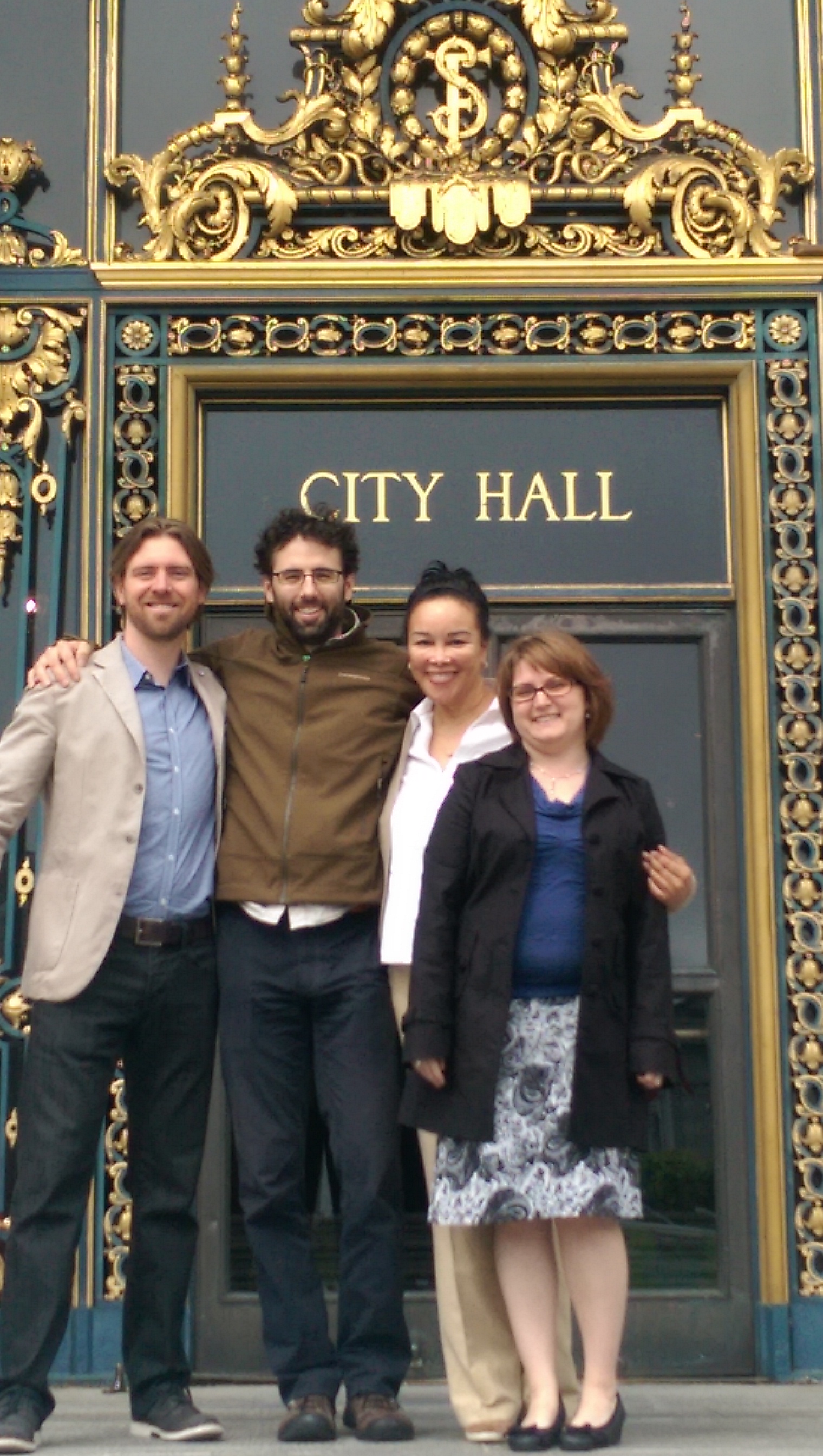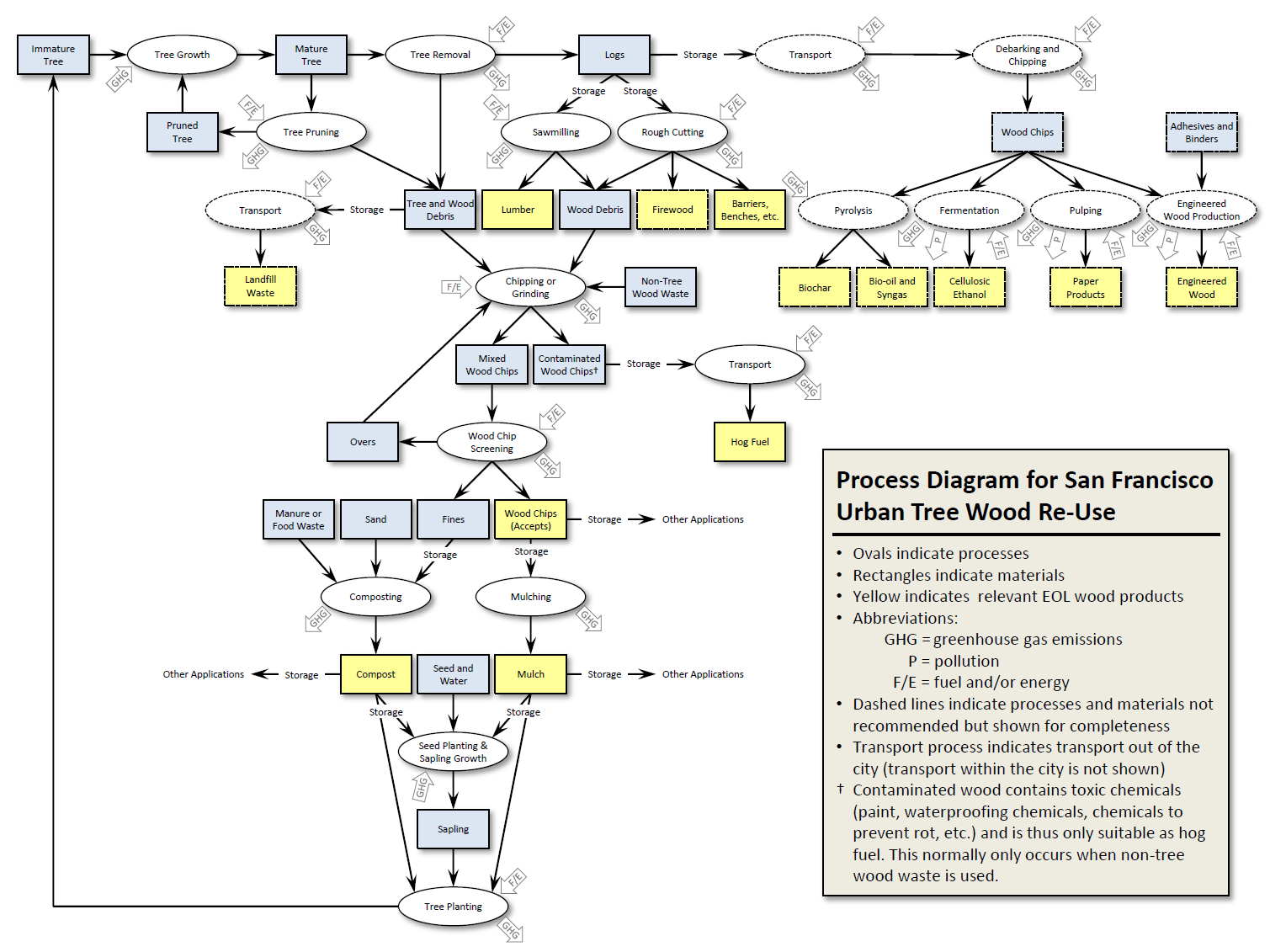
For a city as progressive as San Francisco, it is surprising that it fall short when it comes to our urban forest. Strolling through Golden Gate Park, you might be lulled into feeling otherwise. But step out onto the city streets and you will find a meager canopy covering the city.
With an urban canopy just under 14%, San Francisco lags behind most comparable cities, such as Chicago (17%) and New York City (24%). Even our neighbors in Los Angeles have a more robust urban canopy, and our state capital beats us out for a top-10 spot in American Forests’ recent rankings of urban forests.
Enter San Francisco Planning, who just released the first version of an updated Urban Forest Plan last month. The plan outlines the first steps in a long-term effort to better manage our city street trees. In their efforts, the city turned to PGS to assess best end-use practices for trees once they reach their last days. Whether felled for disease, storm damage or better management, city trees still have potential to provide value to the public, and the City wanted to find out just what might be the best way to make this happen.
 Our team—Jonathan Dirrenberger (C18), Cheryl Dorsey (C18), Sonja O’Claire (C17), and me—jumped at the opportunity to help find this out. It proved a daunting task.
Our team—Jonathan Dirrenberger (C18), Cheryl Dorsey (C18), Sonja O’Claire (C17), and me—jumped at the opportunity to help find this out. It proved a daunting task.
The inner workings of the City are interesting and often confusing. Success depended on us comprehending the relationships between multiple partners: SF Planning, SF Public Works, SF Recreation and Park, the Urban Forestry Council, the City Attorney’s office, and several non-profits working with the city, including Friends of the Urban Forest. Our biggest challenge as a team was understanding how all of these different entities functioned together, and which players had the ability and influence to make changes happen.
From the start, we ran into roadblocks, including interdepartmental conflicts, lack of usable data, differing agendas, lack of transparency from parties involved, funding concerns, and a host of other issues. It was also the buildup to Arbor Day, a busy time for everyone involved. We were unable to get very far in our first attempts to extract the information we needed, despite our persistence and enthusiasm.
Taking a lesson from our Leadership professor, Dr. Cynthia Scott, we switched strategies, literally and figuratively “bringing the cookies” to our next set of meetings. It seemed to help. Coming in with an attitude reset and a mountain of assorted cookies, we started loosening the tight lips and tighter schedules, while gaining insight into individual concerns of our partners that had gone unnoticed or unheard prior to our conversations.
Mapping out the steps for processing urban lumber turned out more complex than we could have ever expected. Jonathan Dirrenberger deserves credit for our project’s heavy lifting, piecing together all the process steps currently involved in bringing a felled tree to its next beginnings as furniture, logs, landscape materials, or nutrients for another sapling to begin.
We mapped out another string of decisions on how to best process and utilize each tree’s end of life use. Currently, any street tree that falls in San Francisco ends up as compost, hog fuel in the hands of Recology or, if it’s lucky, as wood chips decorating one of the city landscapes. But there are many more potential options that exist.
Our task was to find which would yield the best value for SF residents, ranging from lumber and artistic wooden works, logs to sit on at parks, different types of fuel, carbon sequestering biochar, or a variety of different sizes of landscape and composting materials. After extensive research, we had multiple operations solutions and recommendations to present.
We recommended the city focus on three steps:
1) Maximize the value of urban wood by harvesting lumber and logs from both street and park trees when possible;
2) Utilize storage facilities for the Department of Public Works to house wood chips, mulch and compost for later use; and
3) Explore sharing wood processing facilities and equipment between departments.
Making these recommendations a reality requires addressing policy and legal barriers, public opinion, data and staffing limitations, and resource cost-benefit analysis. Challenging? Yes, but a successful implementation would yield reduced tree waste and costs, improved public benefit, and a healthier relationship between City departments—not to mention taking an additional step towards San Francisco becoming a truly green urban environment.
While the beginnings of this EL project had us dreaming that we would create and implement meaningful and impactful recommendations, we found out quickly what we had been subtly expecting from the early on: city process is slow. Tension and politics exist where you least expect. Everything is dependent on funding and, without budget, things come to a standstill.
In the end, we were content to be heard and to provide a voice to further the goals of the Urban Forest Plan. Seeing noticeable change in the major city agencies’ receptivity from start to end of the project was gratifying.
In fact, our contacts at the City shared the report with state-level officials at the California Department of Forestry and Fire Protection (CAL FIRE). We just heard that CAL FIRE has asked to use our report in policy discussions and to promote urban wood utilizations statewide. It’s great to take our coursework into the real world and make an impact.
This article was originally published in Presidian Spring 2014: Theory to Action. Read more from the interactive online magazine here!
Download the full PDF of the team’s findings and recommendations.
